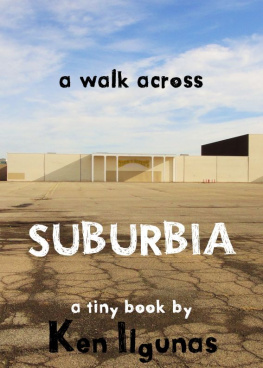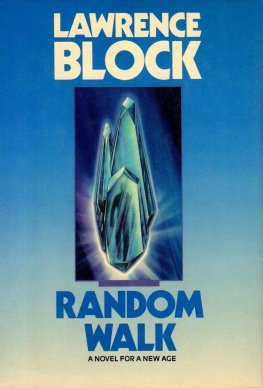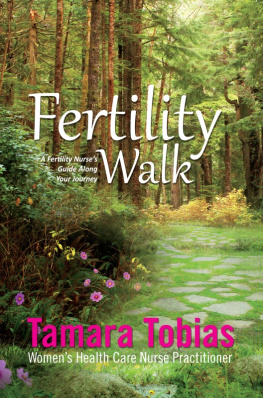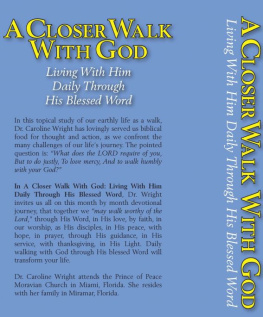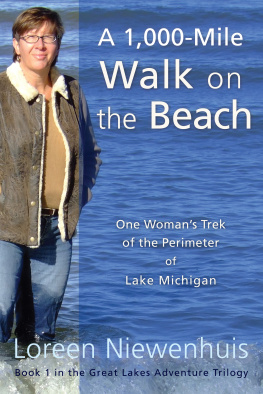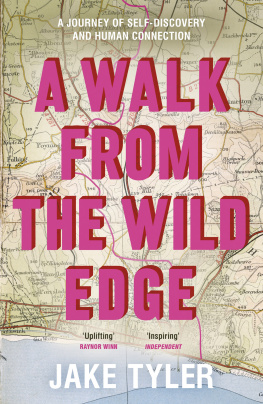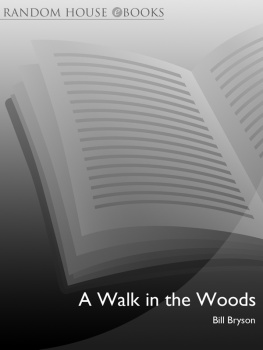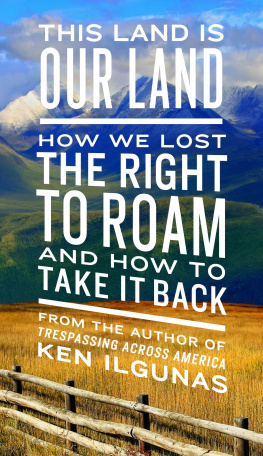A Walk across Suburbia
By Ken Ilgunas
Copyright 2013 Ken Ilgunas
Smashwords Edition
The first rule is that pedestrian life cannot exist in theabsence of worthwhile destinations that are easily accessible onfoot. This is a condition that modern suburbia fails to satisfy,since it strives to keep all commercial activity well separatedfrom housing. As a result, the only pedestrians to be found in aresidential subdivision belong to that limited segment of thepopulation which walks for exercise. Otherwise, there is no reasonto walk, and the streets are empty .
SuburbanNation
Day 1: Home to Niagara Riverto Shawnee Road
Youre going to dosomething stupid, arent you? asked/said my mom, as I jammed thelast of my gear into my backpack.
Im going on a journeyacross Wheatfield.
My mothers panickedresponse (Oh my god!) seemed a bit of anoverreactionappropriate, maybe, if Id told her I was going to myboyfriend Rons place or about to fornicate with a month-oldpumpkin in the front yard, but not for going on a short, three-day(albeit eccentric) walk.
Well, where are you goingexactly? she asked, exasperated, trying to bring some sense intothe senseless.
The lakes.
What lakes?
Exactly .
I hoisted my pack thatcontained a tent, sleeping bag, an extra coat, a few power bars,and a box of store brand Oreos, buckled my waist belt, and beganstrolling down the streets of my old neighborhood.
I walked past two-storyhomes, barn-styled mailboxes, and overturned blue recycling binsthat Id jogged, biked, and driven past a thousand times before. OnKenneth Court, two boys were playing roller hockey with an emptynet. A middle-age man and woman strolled down the road with alaggard lab on its leash. It was an uncommonly warm wintersday.
I could have driven, biked,or even roller-bladed across town, but I wanted to slow myself to asteady marcha pace ideal for seeing old things in new ways; fordiscovering new wonders in old settings. What the walker lacks inspeed, he makes up for in powers of observation. The walker asort of locomotive idler is able to, unlike the cyclist,motorist, and aviator, stop and examine, mull and ponder,photograph and reflectall at the slightest provocation.
Id decided that Id explorethe region at whim, for the next three days, with no real route ordestination in mind, advancing to whatever field or forest, suburbor street piqued my immediate interest. Id determined to travelfreely, no matter how strange a journey through suburbia, letalone my hometown, was. I would not be held back from exploringterrain because of No Trespassing signs, invisible propertyborders, the disapproving glowers from passing drivers, andcertainly not my mothers sensible reservations. No, I wanted toexplore, and I saw it as my right as a free human being of thisplanet to harmlessly walk through my neighboring woods andfields. My only rule was to stay within the borders ofWheatfield. And to walk every step of the way.
Id long wanted to go onsuch a journey, but school, and work, and procrastination had longkept me indoors. I was in town visiting my family for Thanksgiving,having just returned from a seasonal job in Alaska. Except for thefact that it was winter and that the unseasonably warmth could atany point turn into a lethal cold, now was the perfecttime.
Why hadnt I traveledthrough my hometown before? There wassomething silly, I thought, about how we travel thousands of milesto see something exotic and new, while leaving our own backyardsunexplored. And I was no better, taking off to Alaska every summerfor work and play, leaving behind my familiar, though ultimatelyuncharted, home state. Isnt traveling more about perspective thandistance, more about thought than sight, more about reflection thanexperience? Thoreau, a Concord, Massachusetts native, and one ofhistorys great travel writers, infrequently strayed from theborders of his town. I have traveled a great deal, hesaid, in Concord. Theoretically, a palmful of soil and amicroscope would give us enough terrain to explore for months. Andso: I wanted to see, for the first time, my hometown ofWheatfieldthe place I spent the bulk ofthe first twenty-eight years of my life, but a place I felt Idnever really seen.
***
Let me tell you a little bitabout Wheatfield.
Wheatfield is a mostly flat,28-square-mile, rural-turned-suburban community in Western NewYork, home to 18,000 residents (95 percent of which are white),situated between the bone yard industrial cities of Niagara Fallsand Buffalo.
Before it was settled bywhites, it was forest, and probably sparsely populated except formembers of the Iroquois tribes that were likely to have frequentedthe shores of the nearby Niagara River. The first white settler, itis said, wandered into the area in the early 1800s. Wheatfieldbecame a town in 1836, named after the areas staple crop wheat which was one of the few crops that performed well in the claysoil.
Nowadays, Wheatfield issuburban in character, with no true center to town: no centralsquare, no quaint Main Street, no sharp-tipped church signifyingthe focal point. There are, however, plenty of churches, gasstations, shops, and countless pizzerias scattered across town,always a drive, albeit a short drive, away.
For such a small space,Wheatfield does, however, offer a great deal of geographic variety.Wheatfields southern section is mostly suburban, the housingdevelopments pushing all the way south to the mighty Niagara River.To the north, toward Lake Ontario, the suburbs grow thin and theland assumes a more agrarian character, with cornfields in thesummer and pumpkin patches in the fall. To the east, the town rubsagainst the slightly older town of North Tonawanda, and to the westis the city of Niagara Falls, where the environmental disaster ofLove Canal took place in the mid-20th century, just four miles frommy home.
For the most part, the townhas stayed off the national radar, except for a brief flare up fromPETA a few years ago when an old man mixed anti-freeze into a canof tuna to kill a skunk (but ended up killing two of his neighborsdogs). Eyebrows were momentarily raised when a corporate groupproposed a Magical Lands of Oz theme park a few blocks from myhome, complete with a Munchkinland Waterworks, Uncle HenrysBarnyard Petting Zoo, and the Labyrinth of the Nome King, whichnever quite got off the ground. Wheatfield again fell under thenational spotlight when John Wayne Bobbitt, now my high schoolsmost recognizable graduate, had his penis cut off and thrown intothe field by his wife, Lorena, in the early 1990s.
When my family moved fromHamilton, Ontario to Wheatfield in 1989, I remember a mostly rurallandscape. There were vast fields of waving green weeds and rows ofpapery golden corn. There were adolescent forests, and long,straight-as-a-ruler country roads. In the undeveloped lot next tomy familys home was a pond where my brother and I would skate inthe winter and catch frogs in the summer. We built forts in thewoods behind our house and played hockey in the streets.
Wheatfield was, by allmeans, just a pleasant, quiet scattering of subdivisions surroundedby fieldsthe character far more rural than suburban. But over thepast couple of decades, Wheatfield has changed. Fields have beensmothered with asphalt; forests yanked out to make way for newsubdivisions. Between 1990 and 2000, 1,318 housing units wereadded, and since 2000, the towns population increased 28 percent(or 4,000 people). Its one of the fastest growing towns in all ofNew York State.
I wanted to see all thisprogress up close. Better yet, I wanted to see if there was anywildness left in Wheatfield; to see if there was something more toit than rows and rows of houses, retirement homes, and corporateparks. So, on this mild afternoon of December 1, 2011, I set off toexplore my hometown anew.
Next page
